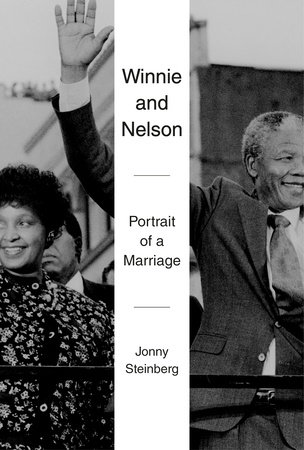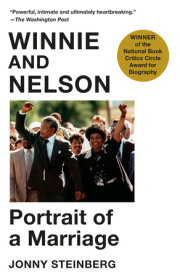Chapter 1
If the middle-aged Nelson Mandela understood his childhood via a single moment, a moment he believed shaped what was to come, it was the death of his father.
He was just eleven or twelve years old. And he was there, in the room; he was watching.
It was by chance, really. For Gadla Henry Mphakanyiswa Mandela was a polygamist married to four women and each had a home many miles from the next. Gadla circulated among them, spending a week with one wife, then a week with another. It so happened that on the evening of his death he was visiting Nelson’s mother, his third wife, and thus died in Nelson’s home.
He had been ill a long time, probably with tuberculosis. That evening, on a mat on the floor, Gadla lay down and coughed without pause. Two women were with him: Nelson’s mother and his father’s fourth wife.
The dying patriarch called for his tobacco and his pipe. But Nelson’s mother demurred; permitting a man in his condition to smoke did not seem right to her.
Gadla did not like this at all. Through the course of the evening, he fought her stubbornly, repeating his demand over and over again.
Finally, she relented; she filled his pipe with fresh tobacco, lit it, and gave it to him. He lay there smoking for some time, his coughing stilled, until the pipe fell from his mouth and he was dead.
In the days that followed, Nelson’s world fell apart. Not long after the funeral, his mother took him on a journey by foot westward from Qunu, the village that had been his home since he was an infant. She delivered him to a place he had never visited and to a household whose members he had never met. He would not live with his mother again, not until he himself was married and invited her to move in with his young family. And he would not have a home in Qunu until he built a house there more than sixty years later.
During his long years in prison, he thought a great deal of that journey with his mother; he recalled looking back over his shoulder at Qunu and feeling not so much bereft as cut adrift. And as he grew older, his memory of that day changed, making him frailer and more vulnerable; by the time he was in his late sixties, he remembered being nine, instead of the eleven- or twelve-year-old boy he was.
He looked back on Qunu with the most extraordinary nostalgia, the river swollen, the fields verdant, the bees forever making the honey a boy might steal.
. .
He was born Rolihlahla Mandela—the name Nelson given to him by his teacher on his first day of school—on July 18, 1918, in the Transkei on South Africa’s southeastern seaboard. It is a world of luminous green; shelves of bright grassland lie scattered as far as the eye can see, as if the pieces of the earth were set one atop the other, instead of side by side.
Most people in the Transkei at this time lived in huts made from mud and grass; women and children wore ocher blankets rather than trousers and skirts. Very few people could read or write. Those who were literate and numerate were usually Christians; they wore Western-style clothes; they attended church on Sundays; they were known as amaqoboka: people who have turned.
They were one of many signs of roiling change. In Nelson’s grandparents’ time, the region that became known as the Eastern Cape was the site of twelve independent, Xhosa-speaking kingdoms. Over the course of the nineteenth century, the British conquered each in turn. Some of these conquests were achieved without a shot fired; some handed over their sovereignty at meetings in which decorum was observed. But in other instances, conquest was devastating, involving mass hunger and landlessness across large parts of the countryside.
The aristocracies that once ruled these kingdoms were humbled, but they were not crushed. Famously, Britain governed its black subjects not directly, through British law, but indirectly, through the subdued kingdoms, the power of black aristocrats clipped by the white magistrates who watched over their work. The relations that evolved between these black aristocrats and their white conquerors became ever so opaque, a ceaseless relay of collaboration and deceit, proud black patriarchs on one side, on the other, proud whites.
And then there was the church. The seaboard on which Nelson was born was the site of the densest Christian proselytizing activity in Africa. And the missionaries were enormously influential. For one, they administered the only schools in the Transkei; aristocrats who wanted their children to read and write—and most did want their children to read and write, for these were the tools of the future—surrendered their progeny to Christian belief. And the missions, too, were the only sites of Western medicine and of modernizing technologies in agriculture. The priests were also in many instances diplomatic conduits to white power at home and to European influence abroad.
And so the relationships that evolved between black aristocrats and white clergy were of great consequence. Many clergymen lived much of their adult lives in the conquered kingdoms; in some instances, their allegiances to the black aristocracies grew deep. Some found the doctrine in which they had been schooled harshly tested by their exposure to black people’s realms and returned home quite different men.
The world of Nelson’s childhood was changing in more ways still. When his father was born, most men in villages like Qunu lived their lives in the Transkei. By the time Nelson’s father died, tens of thousands of the Transkei’s men were spending their working lives more than eight hundred miles away, deep underground, in the Witwatersrand’s gold mines. It was the most rapid and dramatic change that followed conquest, this propulsion of rural men into an industry that had begun to produce much of the world’s gold. When Nelson himself left for Johannesburg as a young man, his first stop was a gold mine.
. .
Nelson was born into the aristocracy of one of the twelve conquered kingdoms, the Thembu; his father was both a royal and, for some years, a senior official. In 1916, two years before Nelson’s birth, he was appointed jointly by the white magistrate and the Thembu paramount chief as headman of the village of Mveso, not far from Qunu, his primary responsibility to administer the allocation of land.
But to say that Nelson was an aristocrat is to risk the gravest misunderstanding. The Xhosa-speaking aristocracies were large and sprawling, and many in their ranks died in poverty; being an aristocrat was no guarantee of either prosperity or fame.
When Nelson’s mother walked him westward shortly after his father’s death, she was taking him to the very center of Thembu influence, the Great Place of the regent to the Thembu throne, Jongintaba Dalindyebo, in the village of Mqhekezweni. But Qunu itself, the only place Nelson had known until then, was not resplendent at all. Nelson, his mother, and his three sisters lived in a homestead consisting of three beehive-shaped huts built from mud, cow dung, and grass. There was no furniture in the room where his father died, only mats, and there was certainly no electricity. Nelson’s mother worked the fields around the homestead, and the family ate what she grew—maize, pumpkins, sorghum.
None of the children of Nelson’s father’s first two wives went to school; each lived and died illiterate.
Nelson’s mother took him to Jongintaba’s Great Place after his father died because the regent had agreed to take Nelson as his ward. Had he not done so, the Nelson Mandela the world came to know would not have existed; he would have had neither the schooling nor the networks of influence to make of himself a person whose name endures.
. .
When he first glimpsed the Great Place, on the last stretch of his journey with his mother, he was awestruck.
“We came across a village,” he later recalled, “at the centre of which was a large and gracious home that so far exceeded anything that I had ever seen that all I could do was marvel at it.” There were orchards of peach and apple trees, a vegetable garden, and flower beds. There was rich grassland on which large herds of cattle and sheep grazed.
As he stood there, wide-eyed, a large car approached, and everyone sitting around the house promptly rose, doffed their hats, and shouted a salute.
“Out of the motorcar,” Nelson remembered, “stepped a short, thickset man wearing a smart suit. I could see that he had the confidence and the bearing of a man who was used to the exercise of authority.” It was the regent, Jongintaba, Nelson’s new guardian.
. .
Several witnesses recalled the depth of Nelson’s distress during the first months in his new home. The regent’s older daughter described him as a shy and lonely boy, wandering around by himself in the new outfit her father had bought him. And three of his playmates remembered that Nelson often wet his sleeping mat at night and surreptitiously swapped it with the mat of another; an innocent child woke in the morning to be accused of Nelson’s crime. Twelve years old is a late age to be wetting one’s bed. His private world was insecure and secretive and full of cunning.
And why would it not be? Just a boy, he had been separated from his home, his village, and his mother, his father recently dead. And the people and the things around him were not only unfamiliar but grandiose. He was out of his depth. Years later, he described his feelings after settling at the Great Place as those of an orphan.
Shortly after he arrived, Nelson was dressed in clothes befitting his new station—crisp khaki shorts and a khaki shirt, according to one witness. Imagining what he looked like in his unaccustomed attire, he saw more an ornament than a boy, “a polished piece of bronze.”
When Nelson first glimpsed the regent, he was struck at once by the comportment of a man accustomed to power. But it was not just the regent himself: all the people around him at the Great Place seemed quite otherworldly in their glamour and their grace. There was, for instance, the regent’s son and heir, Justice Dalindyebo, who was four years older than Nelson. On the day Nelson met him, he was wearing a fine suit and a shirt that was tailored to fit him. And the body underneath the shirt, Nelson could not but notice, was fit and strong. And beyond the clothes and the body was something else, something he hadn’t the language to describe but that is perhaps best named as charisma.
“Justice,” Nelson was to write, “became my first hero after my father . . . Tall, handsome and muscular, he was a fine sportsman [and] a natural performer who enchanted audiences with his singing and transfixed them with his ballroom dancing. He had a bevy of female admirers—but also a coterie of critics, who considered him a dandy and a playboy.”
It is important to mark this image: a shy and timid boy taking in an idol. Throughout his childhood and youth Nelson painted the most overblown portraits of the men he admired: They were not just fit; they were well built and tall. They were not just seductive; they positively trailed admirers. They were not just eloquent; their speeches dazzled. He was an audience to a pantheon of heroes.
Years later, when he himself was the one with charisma and broad shoulders and an audience, he understood himself as an impostor summoning the idols in his head.
Chapter 2
Nelson’s memories of the regent and his world possess the spirit of a fairy tale: the splendor of the Great Place and its grounds, the physical strength of the young men who lived there, the esteem in which the regent was held. Even Nelson himself was sprinkled with magic: in his recent past lay the Edenic Qunu, forever unchanged.
Many of his recollections seem tailored to protect the integrity of this scene, his memories of white people in particular.
As an elderly man, he remembered living in a child’s state of cognitive dissonance. On the one hand, he overheard the regent’s counselors tell the bitter story of conquest, of African heroes who went to battle with whites and lost. On the other hand, there were the white people in his life, the magistrates and senior police officers who visited the Great Place. They were lustrous figures, almost grander than human, but they were entirely benign. For when they came to the Great Place, it was to meet with the regent to the Thembu paramountcy, and they approached him with grace.
There is reason to distrust the spirit of Nelson’s memories, for he almost certainly had grimmer encounters with whites. When he and his peers were in the fields herding sheep and cattle, white policemen often approached on horseback, dismounted, and demanded to see the knobkerries the boys carried. A knobkerrie is a club made of dense wood with a large, heavy knob on one end. The officers would order each boy to put the big, round head in his mouth, and if it did not fit, if he could not wrap his jaws around the whole ball, he would be arrested for carrying a dangerous weapon.
This story was told by three old men who had lived at the Great Place with Nelson. It was not, they insisted, an isolated event; it was an everyday ritual of racial violence, seared for always in their minds.
We cannot know whether Nelson forgot it, or whether he simply chose not to tell it; dwelling on bitter memories in public, he came to believe, was politically poisonous. But from the letters to intimates he wrote from prison, letters in which he ached for the land of his boyhood, it appears that such unpleasantness simply had no place in his remembered world.
Between his memories of childhood and his politics lay an intimate connection. He came to fear violent change, fear revolution; the world, to him, as it was, contained much to cherish, and woe betide those who did anything to tear it apart.
. .
In Nelson’s sixteenth year, the regent decided that he was to embark upon two great rituals. The first was his circumcision, marking a Xhosa boy’s transition to manhood. The second was his registration at an elite mission school, the start of a black boy’s journey to a distinguished career.
It is inconceivable for a Xhosa boy to move into the world of men with his foreskin. And as important as the act of removing it is the ritual: a prolonged procedure, drawn out over as long as two months, which boys experience together and about which they are forbidden to speak.
It is private and secret, but for one moment: the circumcision itself. That is performed in front of a large and intensely interested crowd.
Copyright © 2023 by Jonny Steinberg. All rights reserved. No part of this excerpt may be reproduced or reprinted without permission in writing from the publisher.








